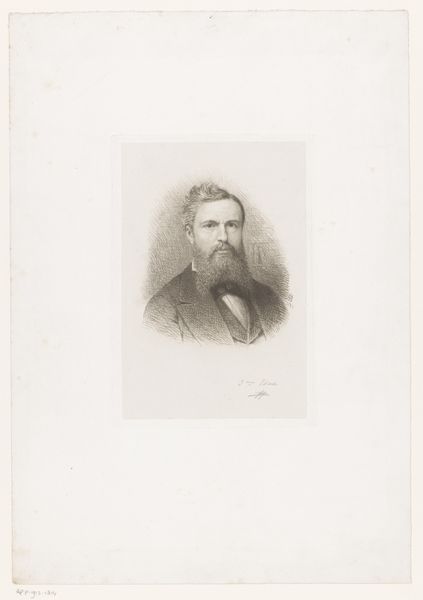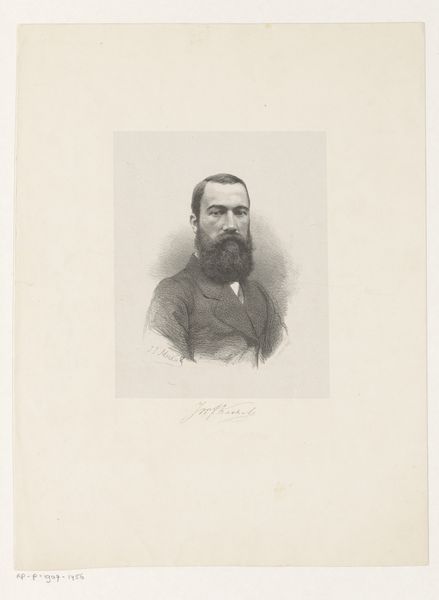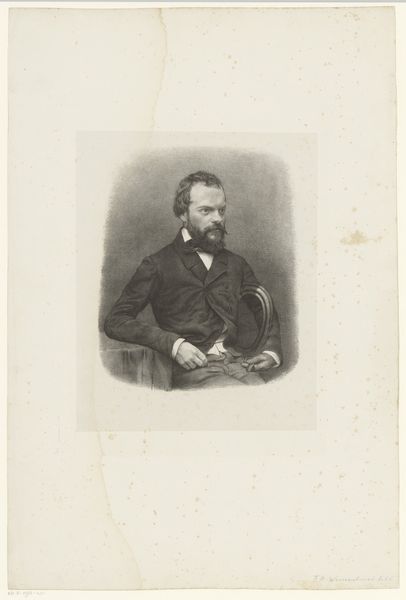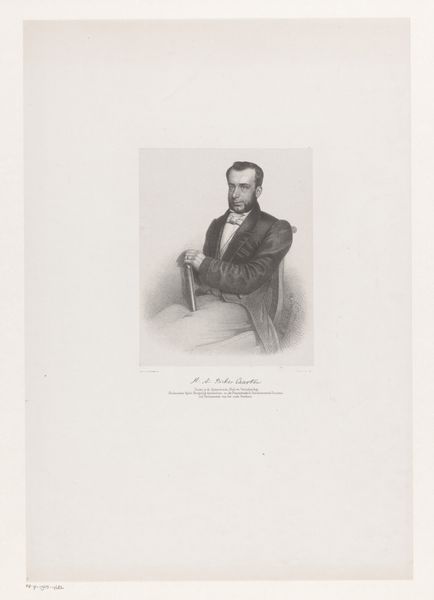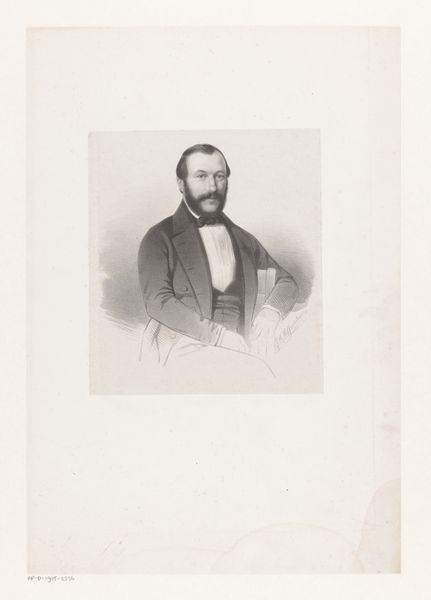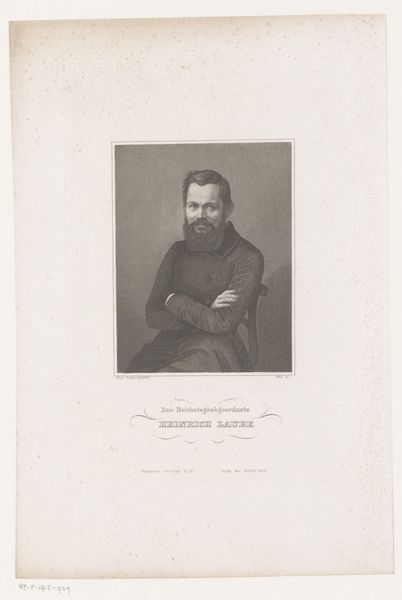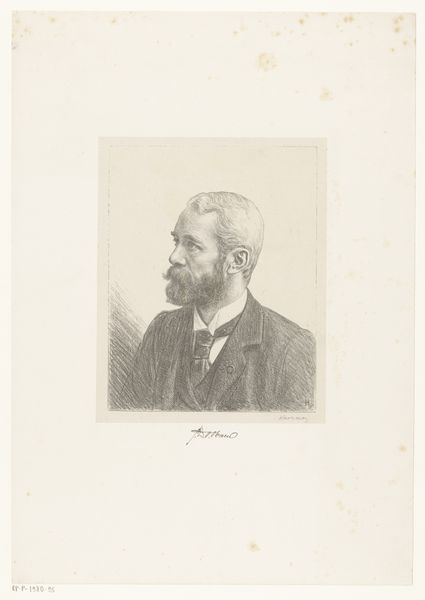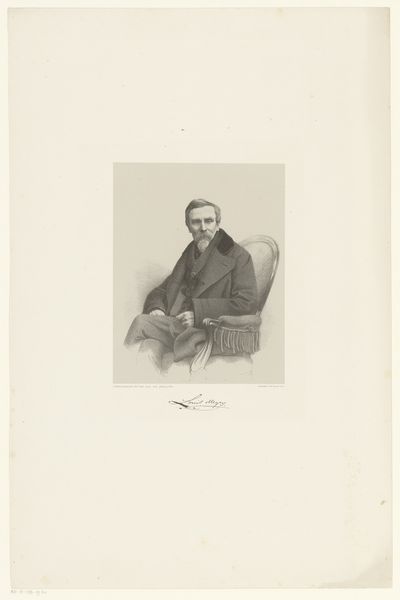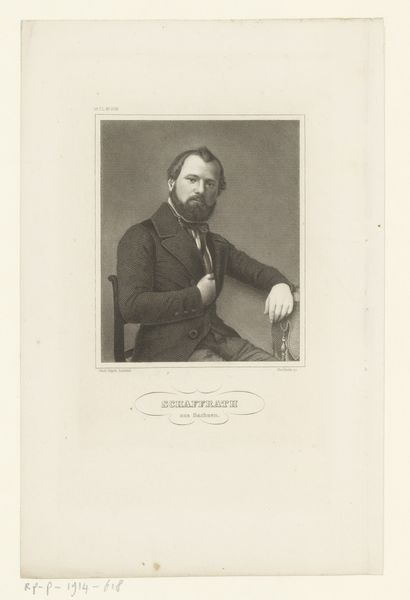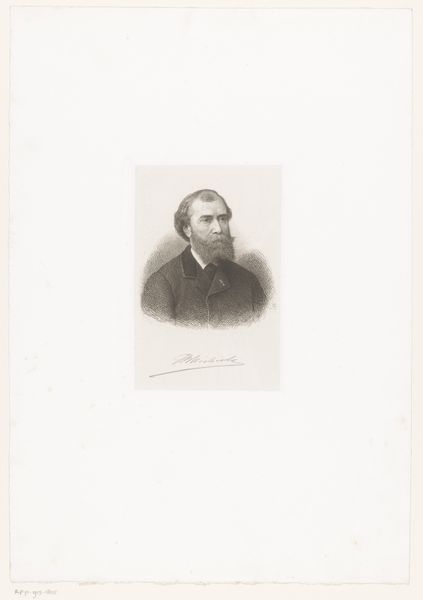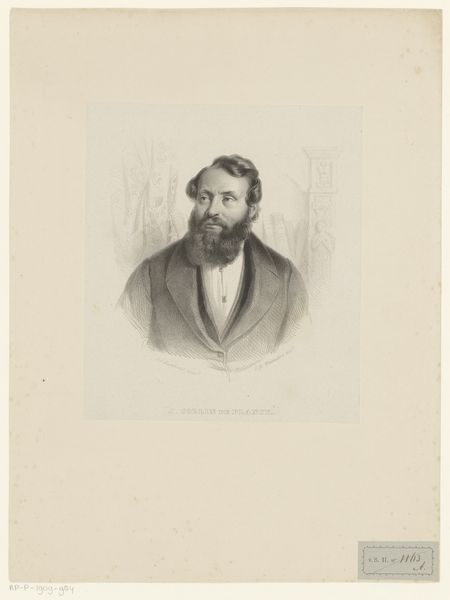
print, engraving
# print
#
history-painting
#
engraving
#
realism
Dimensions: height 524 mm, width 346 mm
Copyright: Rijks Museum: Open Domain
Editor: This is a print from the Rijksmuseum, "Portrait of Alexander Mollinger," created sometime between 1838 and 1863 by Frederik Hendrik Weissenbruch. It has a very stately, almost severe, mood to it. What strikes you most when you look at this engraving? Curator: The gaze first. Notice how the directness pulls us into the psychological space of the sitter. His folded arms—a classic posture, yet it hints at both authority and perhaps a closed-off nature. The beard itself is a symbol isn't it? What do you think the beard meant to people during this period? Editor: Well, beards were very fashionable in the mid-19th century; wasn't it seen as a sign of masculinity and wisdom? Curator: Precisely. Consider then, how Weissenbruch uses realism, to capture a particular ideal of masculine identity emerging in this historical moment, also he connects to art history—visual culture—with that gaze of quiet authority from centuries past. Is it revolutionary, or is it referencing something further back, do you think? Editor: I think it's striking a balance, embracing a contemporary style while subtly hinting at tradition. It's really interesting to consider how much meaning can be packed into an image, even a seemingly straightforward portrait. Curator: Indeed, it is like a coded message transmitted across time. An object is never just itself; it holds the echoes of cultural memory. Thinking about visual codes of class, ambition and masculinity... it makes you wonder what symbols we unknowingly embody today.
Comments
No comments
Be the first to comment and join the conversation on the ultimate creative platform.
